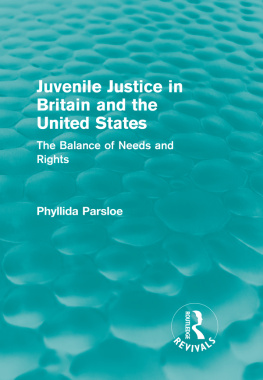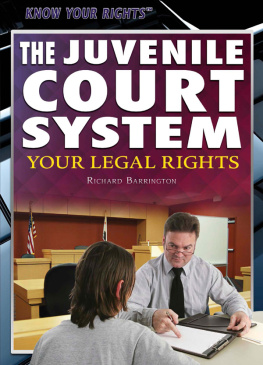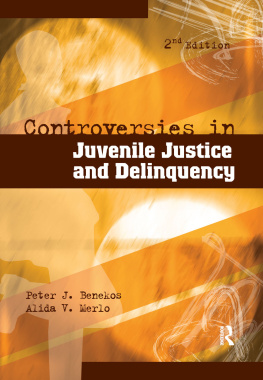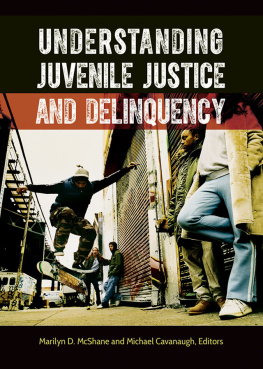Copyright 2018 by SAGE Publications, Inc.
All rights reserved. No part of this book may be reproduced or utilized in any form or by any means, electronic or mechanical, including photocopying, recording, or by any information storage and retrieval system, without permission in writing from the publisher.
FOR INFORMATION:
Sage Publications, Inc.
2455 Teller Road
Thousand Oaks, California 91320
E-mail: order@sagepub.com
Sage Publications Ltd.
1 Olivers Yard
55 City Road
London EC1Y 1SP
United Kingdom
Sage Publications India Pvt. Ltd.
B-42, Panchsheel Enclave
Post Box 4109
New Delhi 110 017 India
ISBN: 978-1-5063-2923-9
Printed on acid-free paper in the United States of America.
Acquisitions Editor: Jessica Miller
eLearning Editor: Laura Kirkhuff
Production Editor: Libby Larson
Copy Editor: Diane Wainwright
Typesetter: Hurix Systems Pvt. Ltd.
Proofreader: Theresa Kay
Indexer: Molly Hall
Cover Designer: Gail Buschman
Marketing Manager: Amy Lammers
Preface
More than 30 years ago, I had the unique opportunity of spending almost every day for several months with about 20 young men who were leaders of juvenile gangs in Philadelphia. They introduced me to their fellow gang members and family members and allowed me to share part of their world. They generously shared their lives with me and profoundly changed my own.
To law enforcement officials and to many community residents, these young men were very dangerous offenders who had been arrested many times and had spent a fair amount of time in juvenile facilities and adult prisons, but to me, they were my teachers and mentors in settings that were very different from my experiences. First and foremost, these young men taught me to listen and to reflect on the life experiences of those less fortunate than myself. Much of my academic and professional career has been built on listening carefully to young people who are often very angry and bitter about their own lives. I have always tried to faithfully communicate what they told me to others in the worlds of public policy, the university community, professional groups, and students. Most recently, I found myself interviewing more than 150 young people who were confined in the California Youth Authority. They told me of everyday examples of abuse and maltreatment by those who were supposed to provide for their education and treatment. Retelling their stories to my fellow Californians is leading to a major reexamination of how the nations most populous state is treating its troubled young people. I saw the reformative power of this approach in the early 1970s when Jerome Miller, then Commissioner of the Massachusetts Department of Youth Services, held press conferences across the state and simply asked his young clients to tell the media what was being done to them by a brutal and corrupt youth corrections system. One result of this effort was that Massachusetts closed its barbaric training schools and returned most youths to smaller, high-quality, community-based programs. Even today, the Miller reforms represent the gold standard for juvenile justice in the Bay State and across the nation.
My Philadelphia encounters with young gang members taught me to embrace the value of redemptive justice. It is what we all would want for ourselves and our family membersa justice system that offers the hope that people can improve and can restart their lives in a more positive direction. I believe that the concept of redemptive justice was central to what Jane Addams and other pioneers in juvenile justice were striving to achieve. Rather than killing off the idealistic vision of the juvenile court, we need to rediscover it.
This book attempts to assemble the research that supports this perspective. I hope to encourage students to think critically. Sometimes, the language used in this book is less than politebut now is the time for plain talk and speaking truth to power. My hope is that this book and the courses in which it will be utilized will be springboards to lead the current generation of idealistic young people into progressive action.
I have many debts to repay to those who helped me assemble this book. National Council on Crime and Delinquency researchers Priscilla Aguirre, Jessica Craine, Sharan Dhanoa, Poonam Juneja, Kelly Knight, and Susan Marchionna assisted in reviewing earlier drafts, running down key references, and suggesting ways to improve the overall effort. My appreciation goes to great colleagues such as Yitzhak Bakal, Frederick Mills, Richard Tillson, and Buddy Howell who were my sounding boards, patiently listening as I tried to work out my ideas. I owe a special debt to the University of California at Berkeley students who lived through classes devoted to the materials in this book and showed me how to improve my presentation. I also wish to express my appreciation for academic colleagues at the Law School and the Institute for the Study of Social Issues.
To my own teachers and mentors, especially Marvin Wolfgang and Thorsten Sellin, I owe so much. They taught me that ideas could change the world for the better and that advances in enlightened social policy are the true measure of lasting intellectual contributions.
Jerry Westby of Sage Publications was a patient and very supportive editor. Susan Marchionna was the central person in pulling together this manuscript. She conducted complex research, forced me to write and think more clearly, and made sure that the final product was worthy of its goals. Without Susans very hard work, this book would still be in progress.
Finally, I want to thank my sons, Moshe and Zaid, and my daughter-in-law Jessica, who continue to keep me plugged into the world of young people, educating me about what is really important in life. My life partner, Karen McKie, is responsible for infusing a humanistic spirit into my scholarly work. Her conceptual physics helped me look at familiar topics with a fresh set of eyes. Most important, she has showed me what unconditional love and building community can accomplish in a less-than-perfect world. Her love and support make my world possible.










